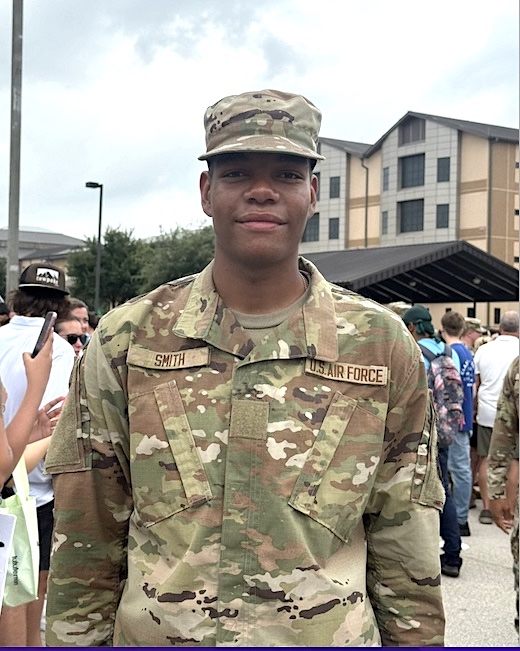Police explain basic laws for safe driving
Published 11:00 am Saturday, April 7, 2012

- A motorcyclist rides the center lane before merging into traffic on North St. Augustine Road Friday. The Times spent much of the day covering the do’s and don’ts of driving in the Valdosta/Lowndes County area as part of its driving 101 crash course.
In response to all the Rant and Rave entries concerning driving problems in the city, The Times decided to give a little Driving 101 crash course with the assistance of the Valdosta Police Department.
To make the course official, The Times reporter sat down with Valdosta Police Sergeant Jay Wolfe Friday and asked him to decipher between traffic cited offenses and simple driving courtesy. There were a few main areas of concern the officer addressed and even included some of the official codes provided by the Official Code of Georgia Annotated (OCGA).
• In reference to cell phone use while driving:
From code 40-6-241.2, Wolfe said, the law forbids any driver under the age of 18 years to talk on a cellular telephone while operating a vehicle. The law also states no driver of any age is permitted to text while driving.
The officer went on to say citing a driver for underage talking on a cell phone while in operation of a vehicle is a little difficult because it is based on age and some people look younger than what they really are. The only way to try and stop underage law breakers in this case would be to park outside of the high schools. He went on to add that texting is a little easier to cite someone for because no one is supposed to be engaging in that while driving.
“As an officer, I would pull you over for texting more so than talking on a cell phone,” Wolfe said. “Texting is one of the most recognizable offenses when driving that one would automatically get pulled over for along with breaking the seat belt restraint law.”
• In reference to driving in the center turning lane:
(Georgia Code 40-6-126) Wolfe said the center lane is for turning only. It is not designed for driving a long distance or for a long period of time. The code strictly states driving in that designated lane should not be for more than 300 feet.
In continuing the conversation concerning the center turn lane, the officer mentioned an offense that occurs pretty often by motorists. He said the center turning lane is for turning out of and not into. An example used was the North St. Augustine area.
“The center lane is not for exiting a business parking lot, just to get into that lane and sit and wait for the opportunity to merge into traffic,” the officer advised. “If you get hit or cause an accident while sitting there, preparing to merge, it will be your fault. And remember, you can only ride it for no more than 300 feet.”
• Driving in the left “passing” lane:
In the city, the left lane rule does not apply like it does on the highway. The left lane is used just as the right lane — it is not designed for faster driving or passing. Motorists should go with the normal flow of traffic, and by impeding that reasonable flow, a driver can be cited for such.
On that same line, Wolfe said the city does not have a minimum speed limit as seen on the highway but being a cautious driver and just plain old stopping traffic are two different things.
When stuck behind the “cautious” drivers, it is important to know when it is legal to pass and when it’s not. The officer briefly mentioned the rules concerning the bold, double lines marked on the streets as well as the solid line with dashes and the stand alone dash markings.
With the solid double lines, a motorist is not permitted to pass the vehicle in front of it.
Another thought that came to Wolfe’s mind, while discussing motorists who have the urge to pass, are those who follow too closely to others (Georgia Code 40-6-49).
“The most common problem that causes accidents is following too closely to others,” Wolfe said. “Drivers need to allow enough space between themselves and the car in front of them. Depending on how a person reads the code, the third vehicle that hits one car and causes it to hit another can be responsible for all the damages that occur to all vehicles. On the flip side, a person can argue that if, let’s say, the second vehicle allowed the recommended amount of space between it and the car in front of it, the third vehicle’s bump would not cause the second to hit the first, if moving within the regulated speed, that is.“
On the topic of speed, the officer also shed light on that subject as well.
In both the city and county, the standard speed for the main roads is 45 (for the most part). If a motorist exceeds that limit by more than 10 mph, a ticket is warranted by an officer or deputy, though going 10 mph over is not encouraged. It is important to note, however, that Georgia State Patrol troopers can stop a vehicle if it is just going two miles over the speed limit if they want to. The 10-mile over rule does not apply to the GSP, even on the highway.
Georgia also enforces the move-over law, in reference to a patrol car or other emergency vehicles. The officer said many motorists tend to either not move over a lane’s length or slow down enough to avoid further complications.
“If for some reason, the driver can’t get over far enough, he or she needs to at least slow down until passing or moving over is possible,” he said. “These same rules even apply to officers both on and off duty.”
Wolfe searched the area of the code book referencing the exact distance a vehicle should move for an emergency vehicle, but no exact number of feet was noted.
“People also need to be aware they are not allowed to pass a school bus while it is picking up or letting off children unless there is a grassy median in the said location. This information can be found in Georgia Code 40-6-163.”
When mentioning to the officer that most motorists tend to get somewhat nervous or apprehensive when seeing a patrol car in the vicinity while driving and may impede traffic subconsciously, he smiled and said,
“What we as officers look for really is voluntary compliance to the law. We would much rather people obey traffic laws on their own so we don’t have to pull them over.”
Wolfe said he doesn’t mind informing the public on what the Georgia Codes state, but he highly encourages all citizens who operate a vehicle of any kind to research the laws for themselves.
“There are so many of the laws that are open for interpretation,” he said. “It’s also important to do some reading, especially for those who received their permits or licenses when they were 15 or 16 years old and then tossed the book afterwards. About 90 percent of the adults driving today don’t know all the laws of the road and would be surprised to see just how many there are and what is in the code book as an offense.”
The codes can be retrieved by visiting Lexis Nexis, a website frequently used by law enforcement.
The Times wishes to thank Sgt. Wolfe for his time in sharing this information.
For more on this story and other local news, subscribe to The Valdosta Daily Times e-Edition, or our print edition.





